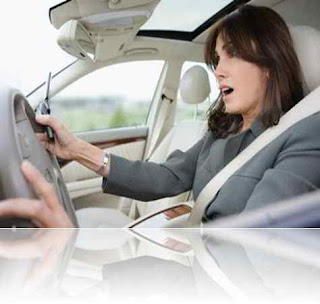Among the phobias, driving phobia probably ranks as one of the poor distant cousins nobody can remember. This is literally true since it does not a Latin name like claustrophobia or arachnophobia. It doesn't mean that this particular affliction can simply be neglected. On the contrary, panicking in or near a moving vehicle is infinitely more dangerous than being stuck in a lift or having to deal with a spider.
In order to overcome this disorder, it is important to understand the nature of the beast. Take a look at the symptoms, causes and possible treatments outlined below. Panicked drivers can be classified under two categories, depending on the nature of the trigger. A person who has suffered in a prior accident has a legitimate reason to panic, and the PTSD symptoms can pop up when facing similar situations again.
The symptoms for the other class of patients are triggered under specific conditions, such as when they are experiencing stress and/or dealing with heavy traffic. Many have a deep-rooted fear of being hurt or killed in an accident. When faced with a stressful traffic situation, the fear takes over the mind and the resultant loss of control leads to a self-fulfilling accident.
Passengers can be afraid of being in a car for pretty much the same reasons. Pedestrians can similarly be afraid of sidewalks and intersections on roads with vehicles whizzing by. Some patients cannot handle excessive speeds, which is a lot more inconvenient since it precludes just about any kind of travel.
The physical manifestation for all these cases is quite similar. Patients will sweat profusely, accompanied by uncontrolled shaking and trembling. The combination of unsteady hands and blurred vision caused by sweat and fear inevitably causes loss of focus and control over the vehicle. The possibility of an accident is now very much real so a full-blown panic attack sets in.
Physicians can prescribe medication to suppress many of these symptoms and prevent frequent panic attacks. But the only permanent cure for this psychological illness is therapy. The driver suffering from PTSD is an exception, and needs a combination of medication and therapy sessions. The rest of the cases can for the most part be cured using only behavioral therapy.
It may also be helpful to consider taking driving lessons from an expert. The aim here would be to overcome the fear and learn to relax while driving. Improving skills and picking up better techniques to drive will further reduce the chances of an accident, and consequently the fear of being involved in one. It might also help to make some changes in the daily routine, such as quitting a stressful commute or a job which calls for a long drive in heavy traffic.
Anyone suffering from driving phobia must realize that it is a serious and recognized disease, similar to alcoholism or obesity. Do not try to hide or ignore the symptoms, because supportive family and friends will be able to help in many ways. The first step in finding a cure for this affliction is to acknowledge its existence and seek help.
In order to overcome this disorder, it is important to understand the nature of the beast. Take a look at the symptoms, causes and possible treatments outlined below. Panicked drivers can be classified under two categories, depending on the nature of the trigger. A person who has suffered in a prior accident has a legitimate reason to panic, and the PTSD symptoms can pop up when facing similar situations again.
The symptoms for the other class of patients are triggered under specific conditions, such as when they are experiencing stress and/or dealing with heavy traffic. Many have a deep-rooted fear of being hurt or killed in an accident. When faced with a stressful traffic situation, the fear takes over the mind and the resultant loss of control leads to a self-fulfilling accident.
Passengers can be afraid of being in a car for pretty much the same reasons. Pedestrians can similarly be afraid of sidewalks and intersections on roads with vehicles whizzing by. Some patients cannot handle excessive speeds, which is a lot more inconvenient since it precludes just about any kind of travel.
The physical manifestation for all these cases is quite similar. Patients will sweat profusely, accompanied by uncontrolled shaking and trembling. The combination of unsteady hands and blurred vision caused by sweat and fear inevitably causes loss of focus and control over the vehicle. The possibility of an accident is now very much real so a full-blown panic attack sets in.
Physicians can prescribe medication to suppress many of these symptoms and prevent frequent panic attacks. But the only permanent cure for this psychological illness is therapy. The driver suffering from PTSD is an exception, and needs a combination of medication and therapy sessions. The rest of the cases can for the most part be cured using only behavioral therapy.
It may also be helpful to consider taking driving lessons from an expert. The aim here would be to overcome the fear and learn to relax while driving. Improving skills and picking up better techniques to drive will further reduce the chances of an accident, and consequently the fear of being involved in one. It might also help to make some changes in the daily routine, such as quitting a stressful commute or a job which calls for a long drive in heavy traffic.
Anyone suffering from driving phobia must realize that it is a serious and recognized disease, similar to alcoholism or obesity. Do not try to hide or ignore the symptoms, because supportive family and friends will be able to help in many ways. The first step in finding a cure for this affliction is to acknowledge its existence and seek help.
By Bertha Wells
About the Author:
Read more about Driving Phobia Symptoms, Causes And Remedies visiting our website.
About the Author:
Read more about Driving Phobia Symptoms, Causes And Remedies visiting our website.







Post a Comment